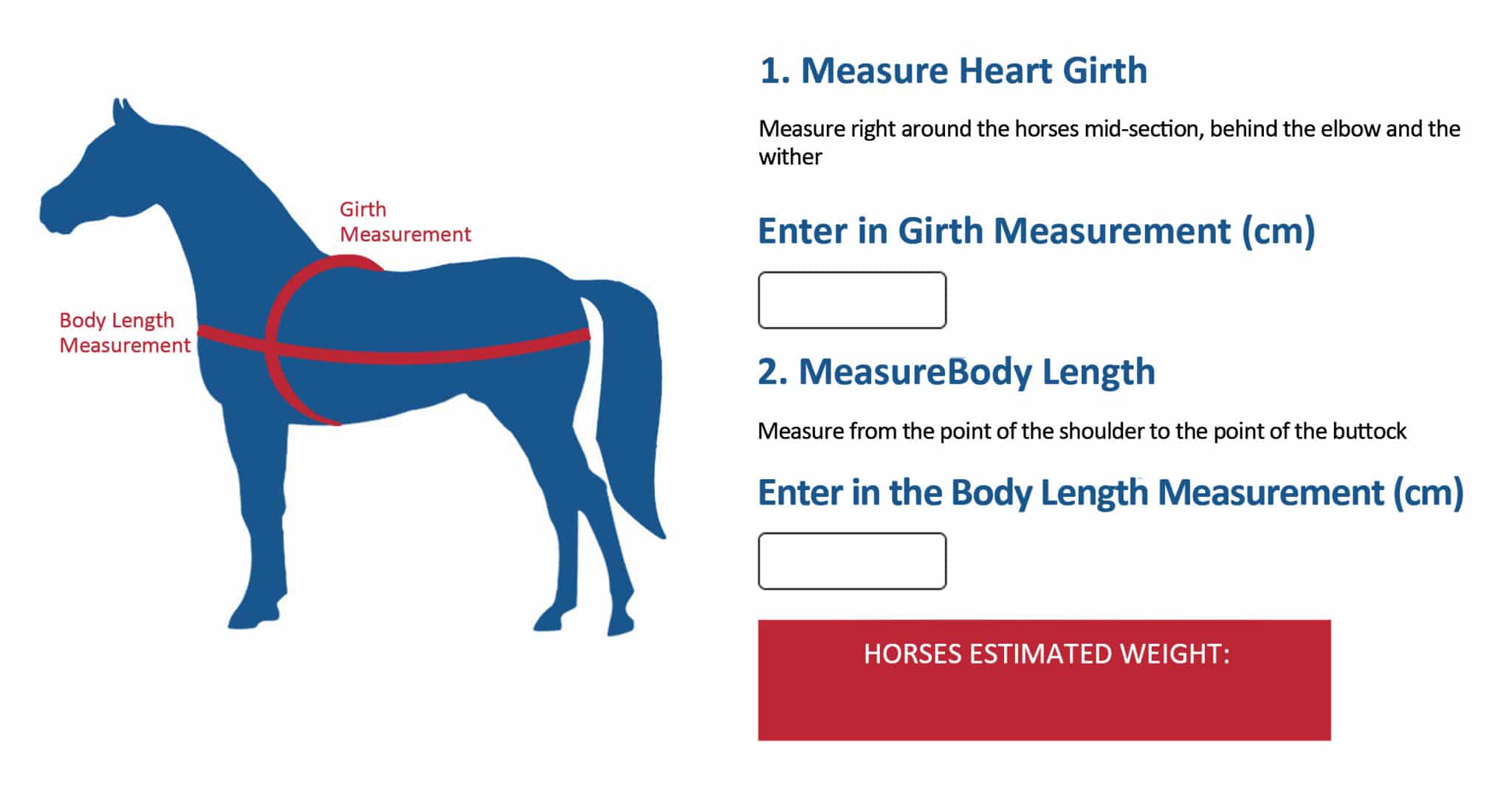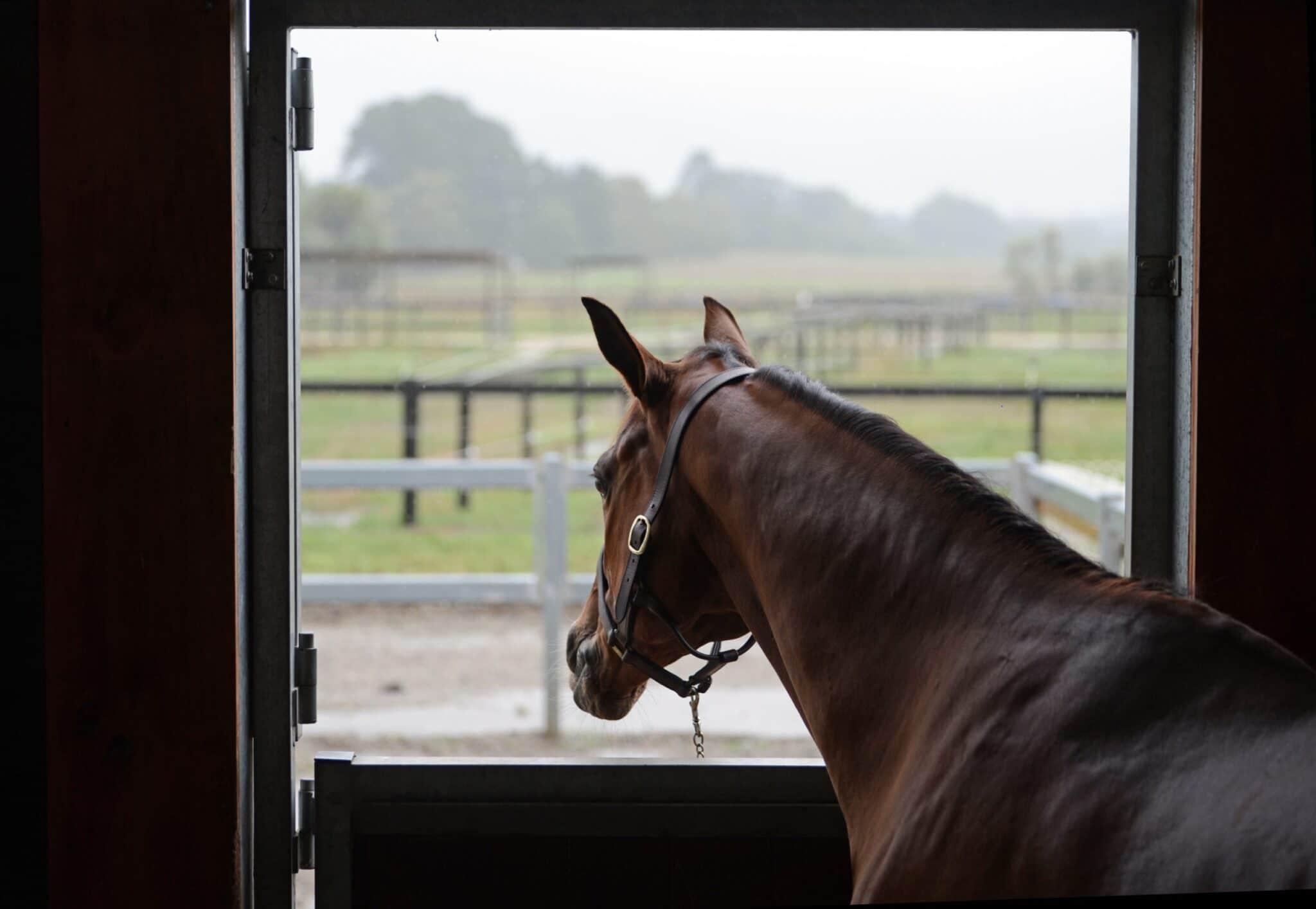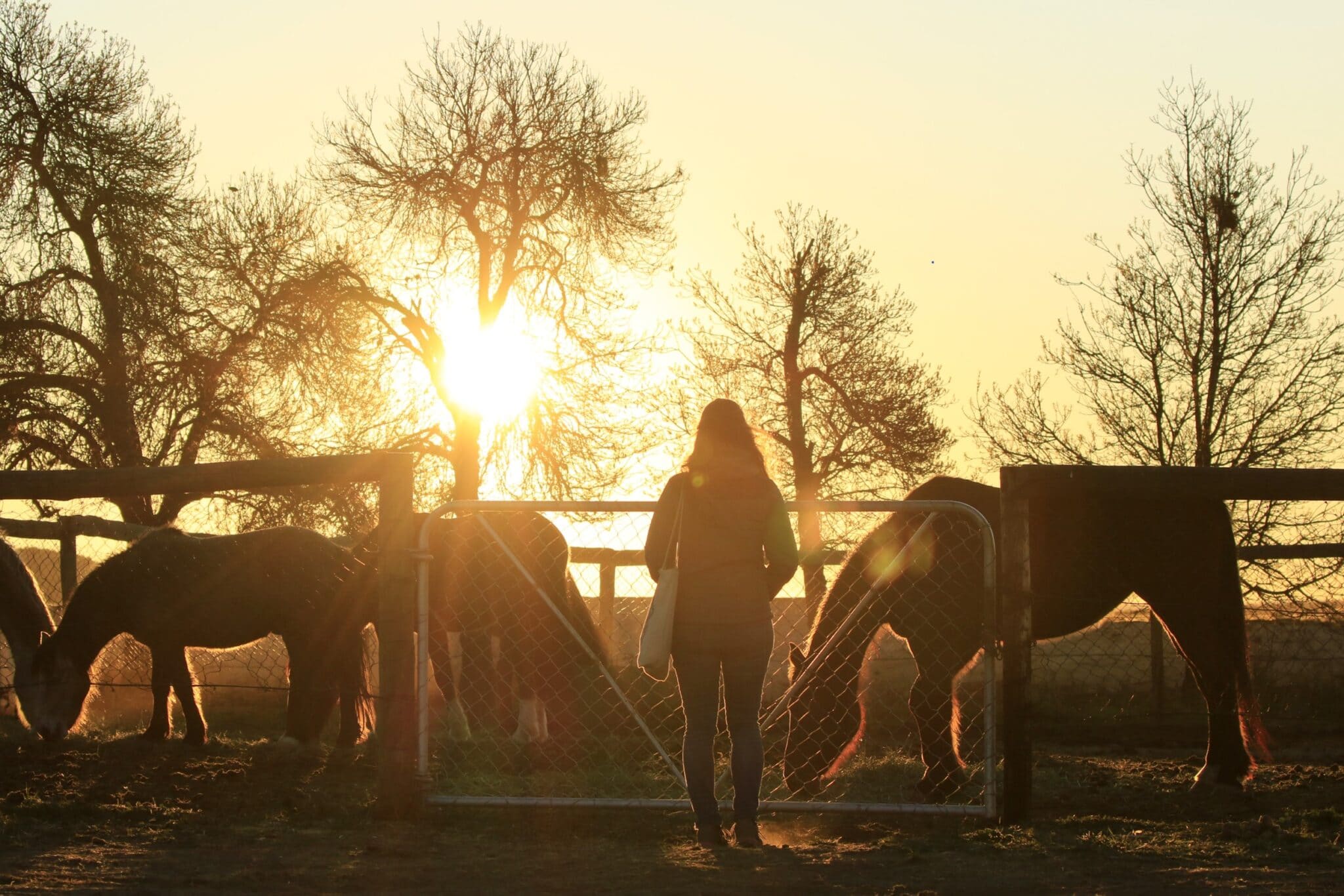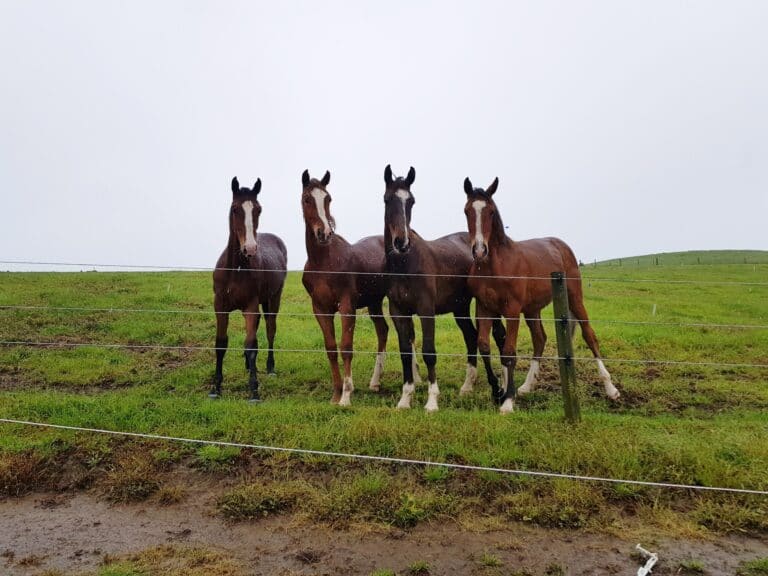Keeping a horse in good condition over winter can be challenging, particularly if they’re older or a fussy eater. DAVID NASH and Dr TOM SHURLOCK offer their expert advice on getting through winter.
Although winters in Australia are generally milder and shorter than those experienced in the Northern Hemisphere, they can still present a problem when it comes to keeping a horse in good condition.
As we move into winter, David Nash, Director of Nutrition Technology for Kentucky Equine Research and an equine nutritionist with over 24 years’ experience, believes we need to properly prepare our older horses if we’re to maintain their health and condition through winter so they come into spring in a healthy way. This preparation should combine both good nutrition and careful management, especially if they’re fussy eaters.

The first step is to evaluate the condition of your older horse: “We need to assess their condition score and weight,” David explains. “There are numerous condition score charts online with example pictures to assist you in determining your horse’s score. We want our horse going into winter in a good to moderately fleshy condition if they are healthy and in light to moderate activity. However, for an older Thoroughbred, it’s generally easier to reduce their weight than to gain weight and condition,” he warns.

Protection from the elements is particularly important for older horses. Horses may require 10-20 per cent additional energy if they’re trying to keep themselves warm in wet and windy conditions. “Some simple solutions are to provide shelter away from wind and rain as well as water proof rugs,” David says, “but remember, if you do rug your horse, regularly check their condition and ensure that the rugs are not rubbing and causing discomfort.”
Horses are herd animals, and some horses will fret if they’re separated from their companions. This can result in a loss of appetite, which will likely mean they’ll fail to consume enough feed to maintain their condition. So if you have a horse who’s prone to fretting, make sure they’re in a paddock with a friend, or that there’s another horse in an adjoining paddock.
Keeping your horses teeth in good shape is also important coming into winter: “The correct chewing of feed initiates the digestive process,” David says. “If a horse doesn’t chew feed correctly because of poor dentition it may result in reduced intake and digestibility, resulting in a drop in condition. Also, an equine dentist can check your horse’s mouth for any ulcers or problem teeth that might affect your horse’s desire to eat their feed.”
Feeding a fussy eater during winter can be quite frustrating. When the weather turns, a horse’s thirst and appetite will decrease resulting in less feed and water being consumed. This can result not only a drop in condition, but also in an increased risk of colic related symptoms.

David suggests that if you’re currently feeding your horse, monitor their condition carefully and adjust their diet accordingly. The key here is to remain flexible: “Consulting an equine nutritionist to ensure your horse’s nutritional requirements are met, and that their feed is balanced is a great idea. If you usually don’t feed your horse and you’re relying on pasture and hay for most of you horse’s intake, I would recommend finding a feed suitably formulated for older horses prior to the onset of winter. If they’re a fussy eater perhaps try a few different feeds to find the one most palatable to your horse. This may mean trying pellets or a sweet feed, but whatever you choose, make sure you’re supplying a balanced ration and in the correct quantities.”
Experimenting with different roughage sources such a grass, oaten, or lucerne hay may also be worth considering. If your older horse has poor dentition, try a softer hay, which will provide a more digestible source of fibre.
If you make it half way through winter and your horse is not interested in eating all or enough of their feed, David has a few tricks for you to try: “Molasses is a sweetener and whilst too much sugar is not ideal, a small amount dissolved in warm water and mixed through their feed will improve its palatability. There are also some natural extracts, such as the gamma oryzanol found in rice bran, that have been shown to increase a horse’s appetite. If you’re considering some of these natural products, ensure they comply with the relevant authority’s rules if you are competing with your horse over winter.”
And to increase your horse’s calorie intake without substantially increasing the size of their feed, David suggests adding either stabilised rice bran or a vegetable based oil such as canola. Vegetable oils are energy dense. For example, one cup of oil can provide an energy intake similar to a kilogram of oats.

But of course it’s not just older horses who need careful attention through the winter months. Dr Tom Shurlock has worked as an equine nutritionist for many years and is currently a consultant for British Horse Feeds. “Winter brings a number of issues around stabling, feeding and keeping any horse warm,” he says. “Of these, water management doesn’t seem important. Obviously, there is a full bucket at all times, but perhaps more attention should be paid to water intake. Over winter there’s a change in the type of forage offered. Hay and haylage consumption tends to be higher and because the moisture content is lower than that of grass, there’s a decline in overall water intake. At the same time, cold water in a bucket is less appealing, especially on cold days, and so water consumption is generally low,” Tom says.
Shorter daylight hours over the winter period equate to reduced grazing time in the paddock, with a subsequent need to increase moist feed while also increasing energy intakes to maintain the horse’s body temperature.
Even though a horse may be stabled for some or all of the day over winter, and given that some days will be milder than others, extra energy will still be needed to keep the horse’s body temperature in the zone of thermoneutrality. “This is a band of temperature above and below which the body initiates activity to keep its own core temperature within normal limits. Shivering at the low end and sweating at the high end are both such activities,” Tom explains.
It has been calculated that for every one degree centigrade drop in temperature a horse needs an extra two megajoules of energy to generate extra heat and, even if stabled or rugged, this can add up to a sizeable load. For example, a five degree centigrade drop in temperature means an extra kilogram of feed or hay needs to be eaten.
However, horses tend to eat less in winter and, although we are probably not exercising them as much, Tom believes we do need to improve the energy efficiency of the feed. There are factors that impact this efficiency and, surprisingly, the temperature of the water bucket is one. “Water intake for a 500kg horse is around 20 litres and the effect of warming that to body temperature could be significant. Twenty litres heated from four degrees to 38 degrees centigrade takes about three megajoules of direct heat. It would take significantly more for a horse to generate an equivalent amount of heat,” he says.

Tom is of the opinion that fibre fermentation goes a long way to supporting body temperature: “The heat generated by fermentation is a bonus energy contribution. However, the energy cost of the body warming water may negate this. Supplying warm water can be a significant support to optimising energy efficiency.”
And let’s not overlook the very real benefits of a warm mash. “Mashes are a brilliant idea for winter,” David says, “as they encourage water intake at a time when it’s sub-optimal. Mashes also, by having a moist presence, encourage chewing and salivary production and ensure the swallowed chyme is well suspended in an aqueous medium, benefiting digestion and hind gut fermentation.”
Additionally, warm mashes tend to tick the palatability box, while at the same time offering a hydrating alternative to cold drinking water and the heat loss it causes.
Visit barastochorse.com.au to access their free diet analysis, tools and calculators, and to explore their extensive range of quality feed and supplements.



